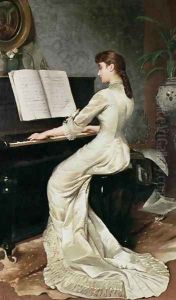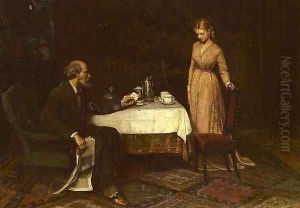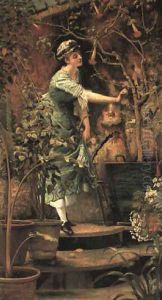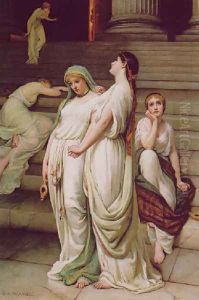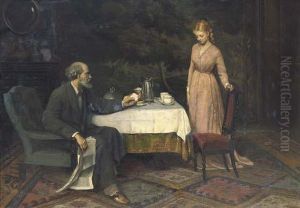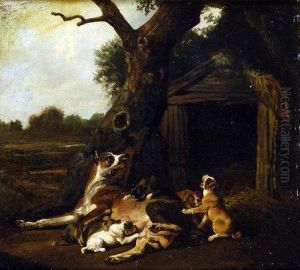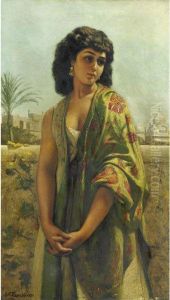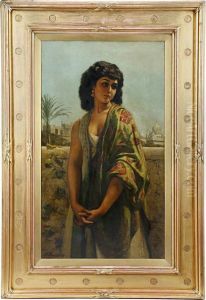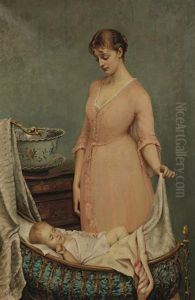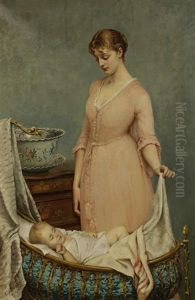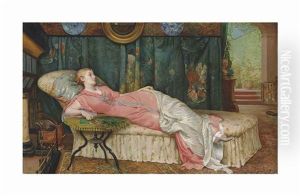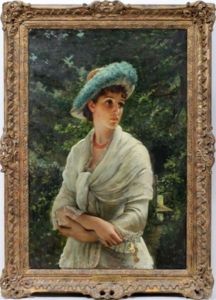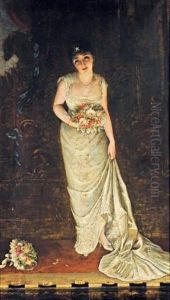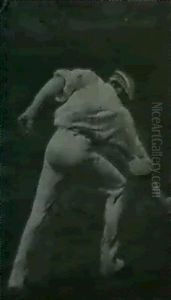George Hamilton Barrable Paintings
George Hamilton Barrable was a British painter known for his genre scenes and historical subjects. Born in 1834, Barrable developed his artistic skills during the Victorian era, a period of significant cultural, industrial, and technological changes in Britain.
Barrable's early life and training are not extensively documented, but like many artists of his time, he likely received formal art education through an apprenticeship or at an art school. He emerged as an accomplished artist during the second half of the 19th century, a time when the art world was experiencing shifts due to the rise of different movements such as Romanticism, Realism, and Impressionism.
Throughout his career, Barrable exhibited his work at prestigious institutions such as the Royal Academy and the British Institution, which were crucial platforms for artists to gain recognition and sell their works. His genre paintings often depicted everyday life and social interactions, capturing moments of leisure and domesticity that were popular among the Victorian middle class. These works reflected the tastes and interests of his contemporaries, who were increasingly able to purchase art as a result of the growing economy.
In addition to genre scenes, Barrable was known for his historical paintings. These works were inspired by events and figures from British and European history, which were well received by audiences who had a strong interest in their national heritage and the grand narratives of the past.
Barrable's artistic style combined attention to detail with a keen sense of composition and color, which allowed him to create both realistic and idealized depictions of the world around him. His ability to convey the subtleties of human emotion and the intricacies of social interactions made his paintings resonate with viewers.
George Hamilton Barrable's contribution to Victorian art, while perhaps not as widely recognized as that of some of his contemporaries, remains a testament to the rich artistic culture of the period. His works can be found in various art collections, and they continue to be appreciated for their historical value and aesthetic appeal. Barrable passed away in 1901, leaving behind a legacy of genre and historical paintings that capture the essence of Victorian society.
